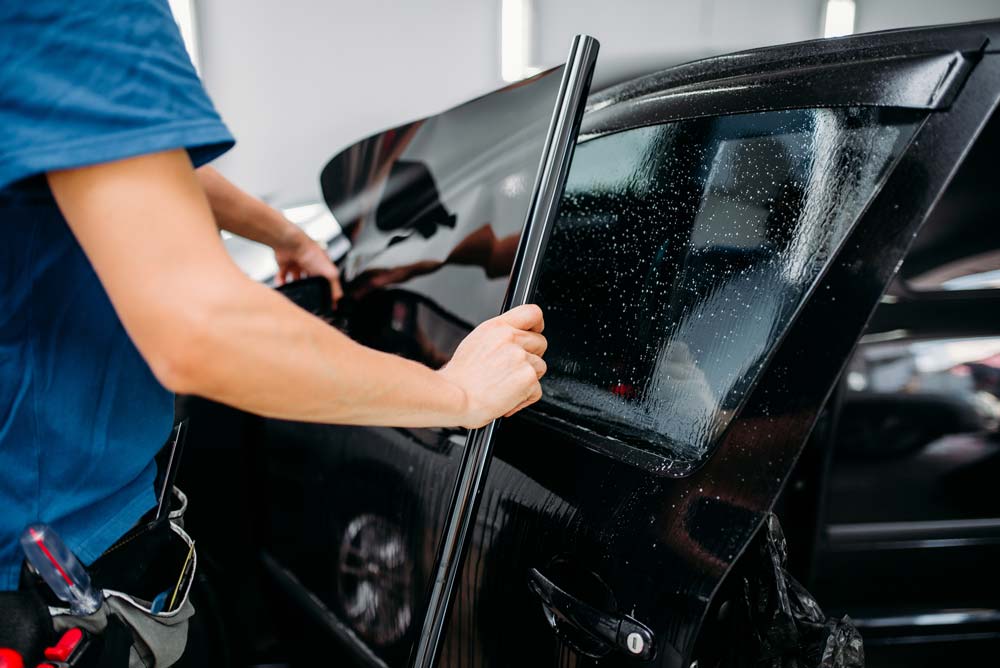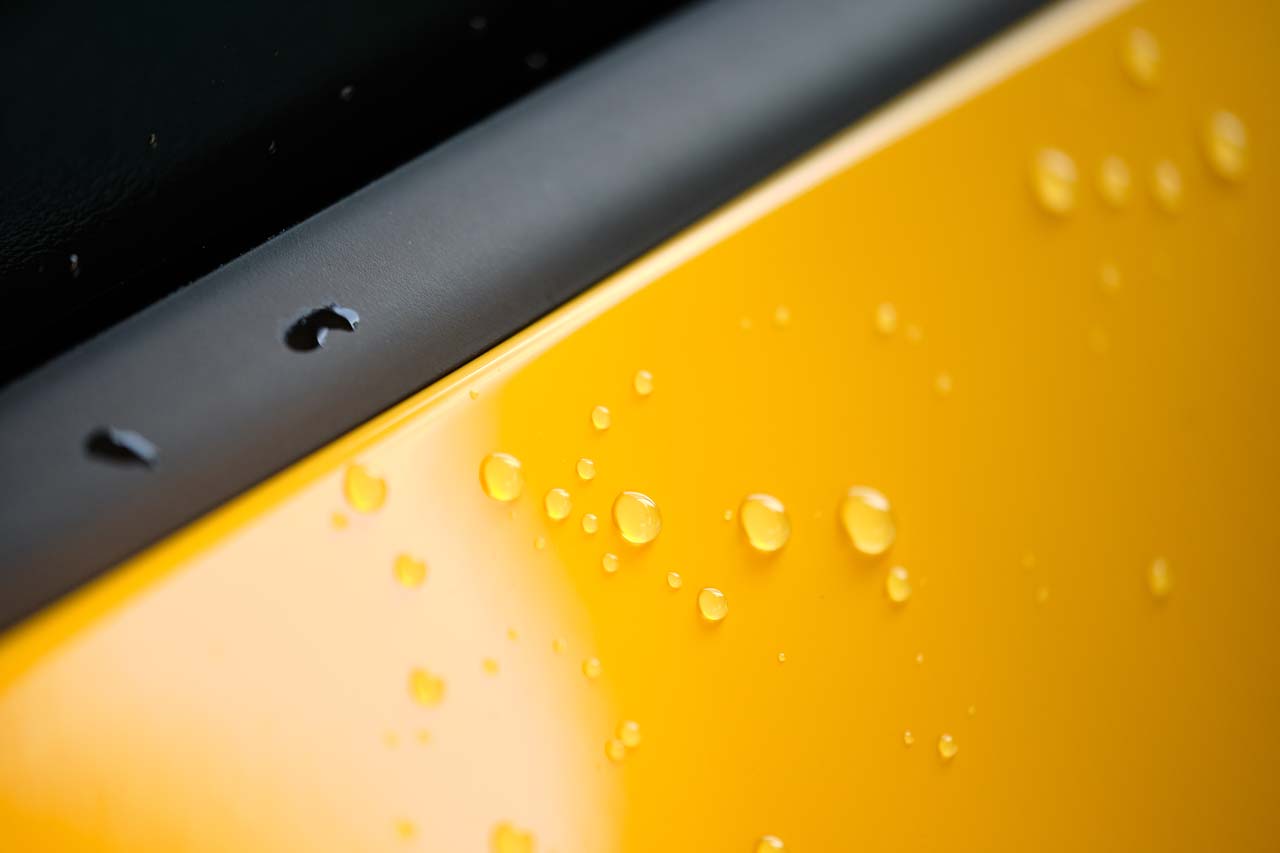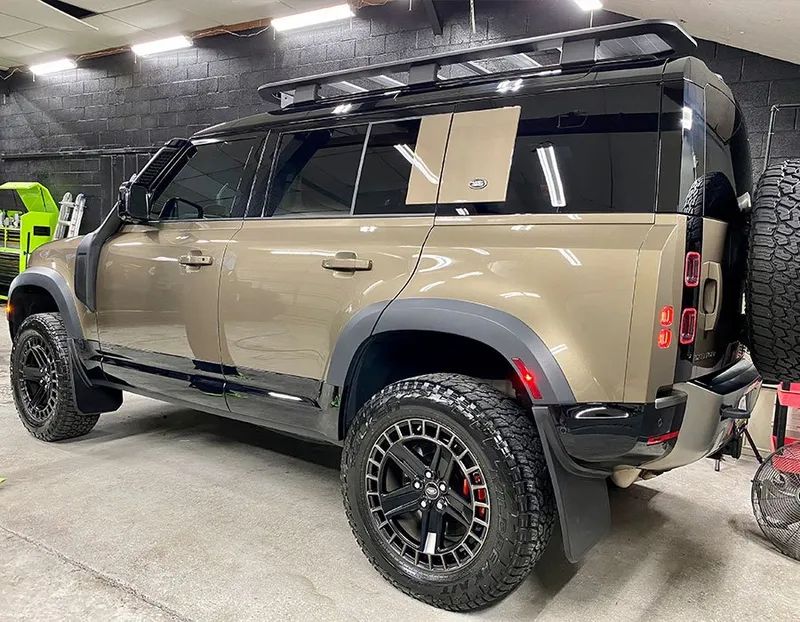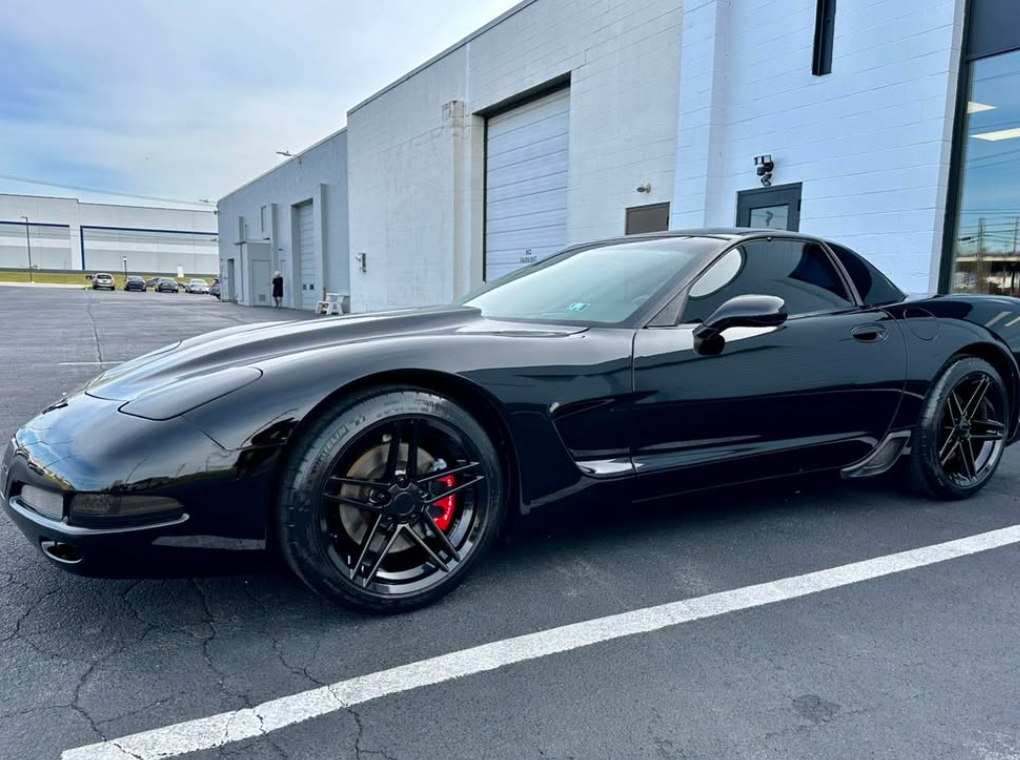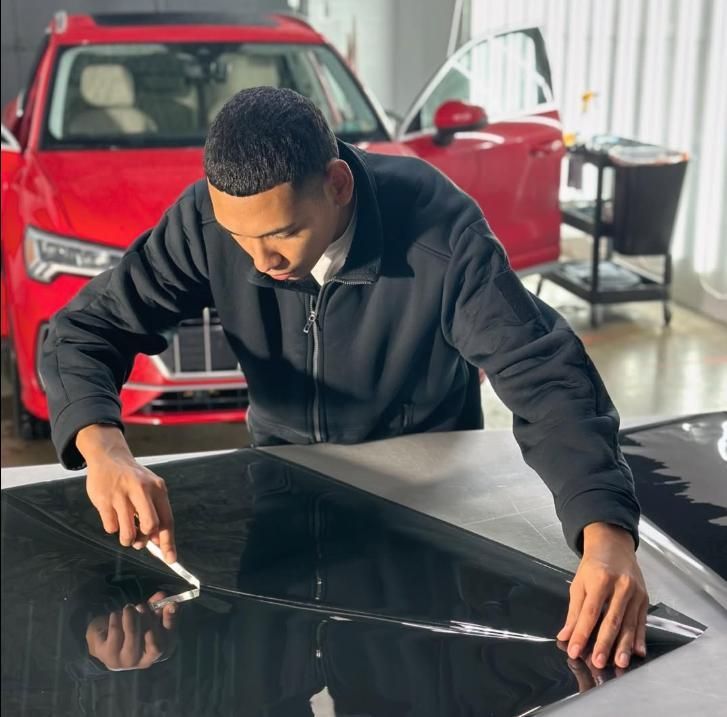One of your car's most vulnerable features is its paint. In its lifetime, the average automobile will sustain approximately a million micro-abrasions—and that's just from driving on the road! So, unless you plan to keep your car locked in a garage for the rest of your life, it will most likely be damaged over time. This is where car paint protection film can help.
Paint protection film (also known as car paint film or PPF) is a protective layer that can be applied directly to the bodywork of your vehicle to protect it from scratches and scuffs. This paint protection detailing tool is used by many professional detailers and drivers in the country, but many Americans are still unaware of why it is important or how to install it.
This article covers everything you need to know about car paint protection film, from various types available, benefits, and drawbacks to what you need to get started applying it.
What Is Car Paint Protection Film?
Paint protection film (PPF) is a transparent layer of plastic that is applied directly to the surface of a car to provide a protective barrier against common types of harmful debris such as gravel, tree sap, and even bird poo.
The film is applied directly to the exterior of the vehicle, either by hand or machine and then heat-sealed to ensure that it remains in place.
Once installed, PPF is completely invisible and will not alter the appearance of your vehicle. It is essentially a removable sticker, which is perhaps the most significant difference between PPF and ceramic coatings, paint correction, or any other type of car detailing.
Advantages of Using PPF
Paint Protection
It shields the paint of the vehicle from minor abrasions and scratches caused by everyday hazards such as gravel and dirt. As a result, it can extend the life of your car's paint, which will save you money in the long run due to fewer future repairs and a higher resale value.
Preserve the Looks
Some people believe that applying paint protection film will make their car appear to be a used model. Contrary to popular belief, paint protection will keep your car looking newer for longer.
Furthermore, because PPF is invisible once applied, it will not alter the appearance of your vehicle. People won't even notice it unless you tell them.
Protection from the Elements
Aside from rain and snow, exposure to sunlight can fade vehicle paint jobs, leaving them dull and uninspired. Because of the color variations caused by uneven sunlight, you may need to repaint the car.
PPF's unique chemical properties prevent UV ray damage, preventing paint from fading
.
Self-healing Properties
When exposed to heat, self-healing paint protection materials in the film return to their lowest energy state, allowing them to repair surface scratches or dings when washed with warm water or left in the sun.
Installing Paint Protection Film-A Step by Step Breakdown
Get the Materials Necessary to Install PPF
Make sure you have all of the necessary materials before you begin. You'll need the PPF, which you can get online or at your local auto parts store. A squeegee, lint-free cloth, and spray adhesive are also required. You should also have a cutting tool and a spray bottle of water on hand.
Measure and Cut the Film
Before you begin installing the film, take measurements of the vehicle to determine the best placement for each piece of film. To measure the distance from one part of the car to another, use a measuring wheel or a ruler.
Make a note of the measurements in case you need to make any changes.
After you've measured the car and determined where each piece of film will go, cut each piece to fit. Most films come with a pre-cut line, but if yours does not, use a ruler to measure the length and mark the spot where you want to cut.
Mask and Tack the Film
When you're ready to install the film, mask off the area where it will be installed. Begin by tabbing the corners of the film. This is accomplished by using a squeegee to press down on the corners of the film.
After that, roll the film onto the car. Make sure the film is rolled towards the back of the car. The adhesive will be on the inside of the film if it is rolled in the proper direction. This is significant because you want the adhesive to adhere to the car's surface rather than the other way around.
Once the film has been rolled down towards the back of the car, secure it with clamps or a roller.
Spray the Coating and Install the Film
Once the film has been tacked down, make sure to spray the coating on the film's surface. The coating acts as an adhesive, retaining the film until it dries. The coating usually takes about 15 to 20 minutes to dry.
Once the film has been coated, use a squeegee to smooth out any bubbles or wrinkles. Slowly and carefully push the bubbles out from the center of the film to the edges. When doing this, make sure to use even moderate pressure.
Contact Prestige Auto Spa for All Your Auto Detailing Needs in York, PA
Let’s be honest: installing paint protection film is not exactly a walk in the park, no matter how many YouTube videos you watch or tips you get from someone who's had PPF installed on their car.
There are numerous things that can go awry. There’s the risk of being too aggressive with the heat gun and melting the vinyl instead of just melting its adhesive layer. There’s also the risk of not heating small areas enough and ending up with air bubbles underneath.
Even if you manage to avoid these potential pitfalls, you will still need to tape off every single secondary surface, which can be quite a challenge on something like a bumper or fender. That’s why many car owners would rather leave it to pros who have experience installing PPF.
To avoid such a disaster happening to you or someone you know, you should consider the best car paint protection services available only at Prestige Auto Spa. We are a one-stop shop in York, PA, for premium interior detailing, window tinting, and ceramic coating services. Call us today at (717) 858-0453 for a free consultation with one of our detailing experts.


